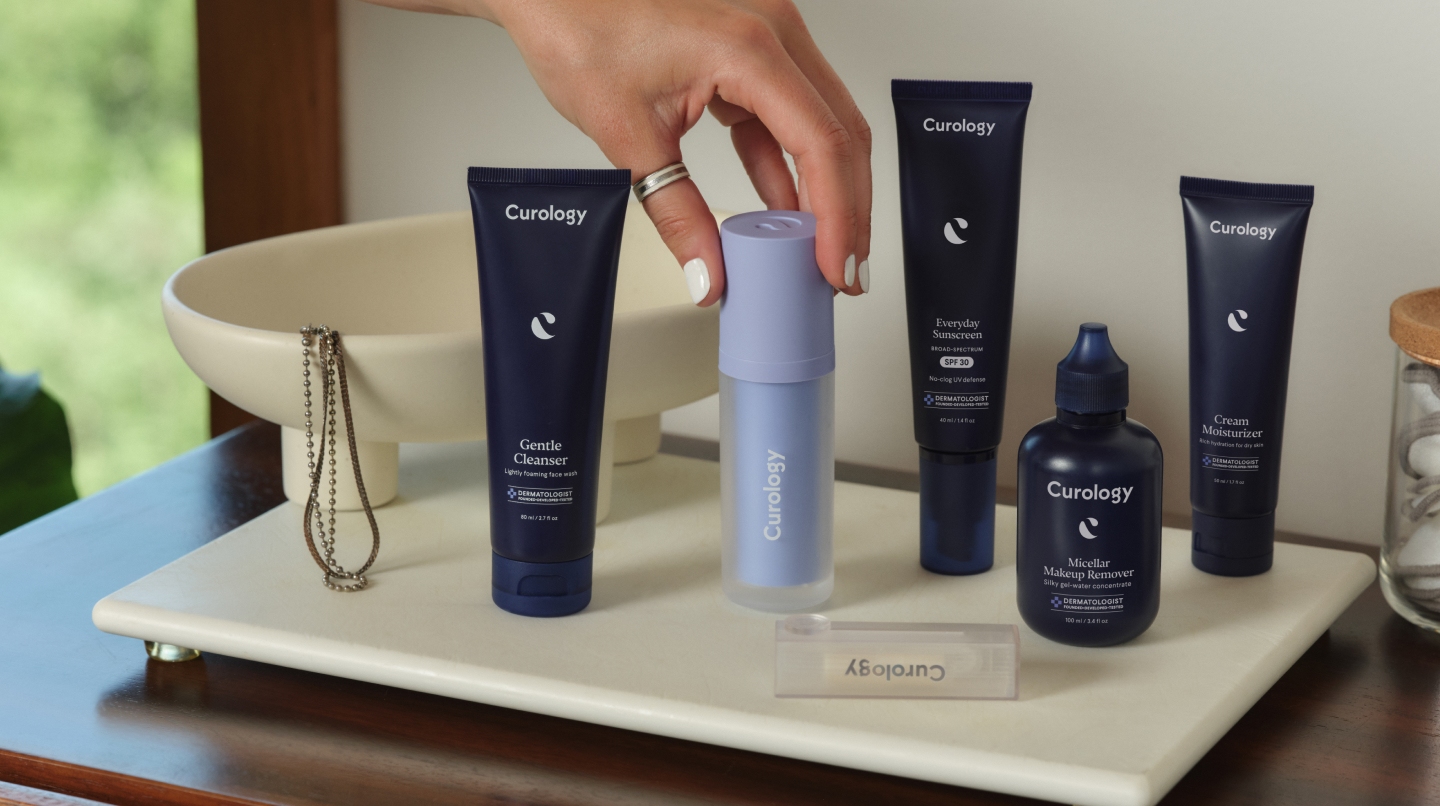How it works:
Share your skin goals and snap selfies
Your dermatology provider prescribes your formula
Apply nightly for happy, healthy skin
How it works:
How it works:
Share your skin goals and snap selfies
Your dermatology provider prescribes your formula
Apply nightly for happy, healthy skin
How it works:
DIY face masks to do at home
Make your own skincare with stuff in your pantry



I love the spirit of DIY skincare. It brings two of my favorite things together: self-care and food. That said, I’m drawing a line in the sand: mayonnaise belongs in my grandmother’s casseroles, not on my face. And some of those super trendy face mask recipes are outright bad for your skin. Instead of making weird concoctions, I wanted to focus on face mask recipes with easy-to-find ingredients that can help soothe inflammation and moisturize the skin.
Before you do any of these masks: patch test, twice. Do a test on your inner arm first, then on a small area of your face. Please know that home remedies may be fine, or they may not — it depends entirely on what they are made up of and whether or not your unique skin can tolerate these ingredients.
The aloe vera face mask
Aloe vera has anti-inflammatory effects and antiseptic properties, which can soothe certain skin problems, like acne. It’s also lightly moisturizing, so it can be used as a hydrating mask.
Step 1: Get your fresh aloe. You can cut a chunk from your aloe houseplant (it will grow back!) or check the produce section of your local grocery store for a big leaf.
Step 2: Harvest your gel. With a sharp knife, cut the thorny sides away from your leaf. Then, cut the leaf into thick rectangles.
Step 3: Application. Cut one side of the leaf away from your biggest aloe square. Pick up the leafy side of the aloe leaf and rub the gel all over your face, neck, and décolleté. If you have leftover aloe, I recommend using it to make your own aloe vera gel, which will keep in your fridge for about a week.
Step 4: Enjoy! When I do this, I just let the aloe soak into my skin, but you can also leave it on for 15 minutes then rinse off.
The honey face mask
Honey is a natural humectant, which draws water from the air onto the skin to boost moisture. It can also potentially fight against bacteria, fungi, and viruses — depending on its chemical composition.
Step 1: Get the best honey. While pure honey is likely fine most of the time, I highly recommend you get your hands on some medical-grade honey for your DIY mask. This is because non-medical grade honey may contain viable bacterial spores and exhibit less predictable antibacterial properties. Using medical-grade honey is a good way to ensure you’re reaping the benefits of its antibacterial properties. You can order it online, or pick it up at your local health food store or vitamin shop.
Step 2: Protect against stickiness. Cleaning up sticky honey is not relaxing, so serve up about ¼ cup of honey into a bowl. Then, get a clean brush — one with long, thick bristles, like a pastry brush or paintbrush. You’ll also want to pull your hair off of your face — no sticky honey hair today!

Start your free trial (plus shipping and handling)
Step 3: Apply. Dip the brush into the bowl and scrape off any excess. Then apply a thin layer of honey to your face. Repeat until your face is covered.
Step 4: Wait and rinse. Let the mask rest for about 10 minutes. Wipe your face with a damp washcloth and then rinse off any excess honey still left on your face.
The oatmeal face mask
Most of us have had a soothing colloidal oatmeal bath at some point (for me, it was the chickenpox, age 6). It has antioxidants, which soothes itchy skin, and it also helps to improve the skin’s moisture barrier function. You can make your own colloidal oatmeal mask at home.
Step 1: Grind your oats. Measure out ¼ cup plain rolled oats (no sugar, cinnamon, or dried fruits). Then, blend them in a clean coffee grinder, food processor, or blender until you have a fine powder (about 60 seconds).
Step 2: Mix your oats. Add 2 tablespoons of warm water to your mixture and stir. You’ll end up with a thick paste. You can also add a tablespoon of your medical-grade honey if you want.
Step 3: Apply. With a clean rubber spatula, spoon some of your oatmeal mask onto your face, then use your fingers to spread it around. Repeat until your face is covered.
Step 4: Wait and rinse. Leave the mask on for about 10 minutes. Wipe your face with a warm washcloth, then rinse off the excess.
The green tea eye mask
Green tea is a super healthy drink of choice, and, as an extract, green tea has some topical skin benefits. When applied to the skin, the caffeine in green tea constricts blood vessels directly below, helping to reduce swelling and even skin tone. This can help improve the appearance of dark under-eye circles.
Step 1: Steep. Make 2 cups of green tea as directed, then set aside the tea bags, allowing them to cool completely — no burning hot tea bags to the face! Have a cup of tea with your roommate while you wait.
Step 2: Relax. Lay down in a comfortable spot — you’ll be there for a few minutes. It’s a good idea to get a timer ready, too, since your eyes will be closed while you do this mask.
Step 3: Apply. Now that your tea bags are cool, rest a bag on each of your eyes.
Step 4: Enjoy. Leave your tea mask on for 10–15 minutes. When time’s up, simply wipe any remaining moisture off your skin.
Custom skincare does the work for you
Slathering my face in aloe vera like my ancestors did makes me feel connected to the natural world, but stone age skincare might not be enough for most of us 21st-century acne sufferers. Curology takes the guesswork out of skincare by pairing you with an in-house medical provider who can prescribe you a customized cream for acne and anti-aging skin concerns. The Curology complete set takes care of your entire skin routine, with a custom cream, gentle cleanser, and a moisturizer of your choice. Sign up for a free trial and just pay $4.95 (plus tax) to cover the cost of shipping/handling on your first month of custom treatment.

Stephanie Papanikolas
Related Articles
How to remove makeup without makeup remover wipesThe complete guide to face cleansers for every skin typeDoes dermaplaning cause acne? Experts explainThe 6 best chemical exfoliators for glowing skinNavigating the world of oil-free moisturizers: Our top 4 picksPopular Articles
Ask Curology: Is my cold breaking me out?Slugging: The dermatologist-approved skincare hack going viral on TikTokTretinoin vs retinol: What’s the difference?How to create a self-care routine that actually sticksYour 2023 skincare horoscopeTry prescription skincare
Get routine essentials

Good skin days ahead
- Breakouts
- Redness
- Fine lines
- Dark spots
- Hair thinning